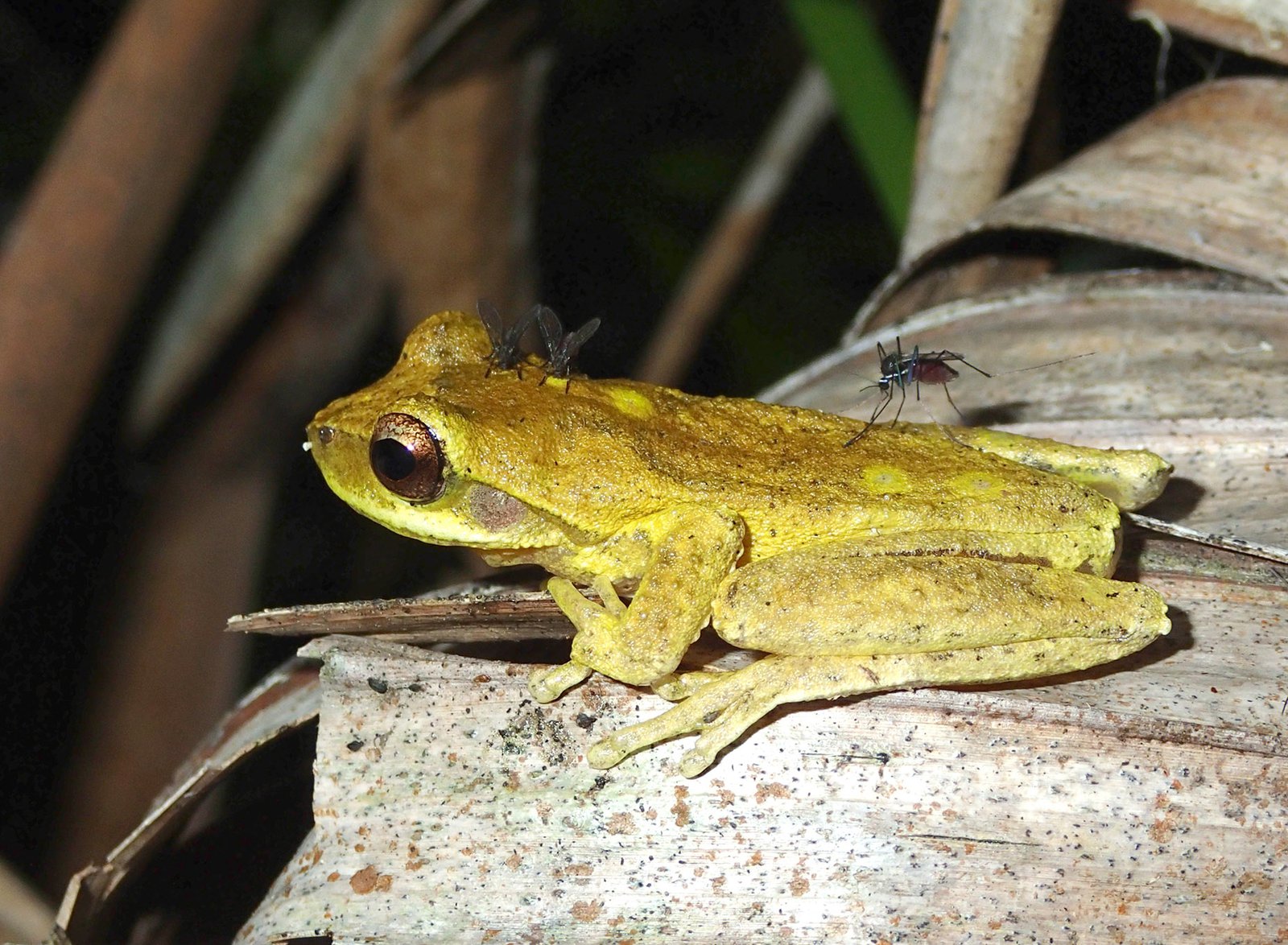A call for photos of blood suckers
DNA from mosquitos' meals could give insight into endangered frog populations.

© Jodi Rowley
I’m working to increase detectability of secretive frog species for conservation, using their parasites. I hope to find out whether I can collect and sequence frog DNA from the bellies of insects. It’s all very Jurassic Park, but rather than bring dinosaurs back to life, I hope to gather information to help prevent frogs from joining their ranks. So if you’ve taken photos of a frog and it has mosquitos, or any other flying parasite on it, I need them!
Frogs are among the most threatened animals in the world. According the IUCN Red List of Threatened Species, 42% of all amphibian species (most of which are frogs) are threatened with extinction. So frogs are a clear conservation priority, but effective conservation is often hampered by the fact that it can be very difficult just to find them. The entire conservation process depends of us knowing where species live, but because some frog species are secretive, well-camouflaged, very rare, or live in places that are hard to access, their detectability can be prohibitively low using typical survey methods.
Recently, a few frogs have been detected without needing to be seen by filtering DNA from water in their habitat. But only a handful of species actually spend a lot of time in the water, and sometimes just getting to the water is the problem (think steep gorges!). A relatively new method for detecting animals takes this a step further, and out of the water, by cueing in on blood-sucking parasites and using DNA sequencing to see who they’ve been feeding on. This is called iDNA. The ‘i’ stands for invertebrate-derived, and some of the most pesky invertebrates have become huge assets for it. For example, scientists are using blood-hungry leeches to study one of the rarest mammals on the planet, and to satisfy my bloodlust, I’m after the kind that ruins your al fresco summer nights.
iDNA could become a hugely important tool in frog research, but there is still so much to learn about frogs and their parasites. For this reason, consider this a call out for help; if you have photos of frogs being fed on by midges, flies, or mosquitos, I’d love to hear from you. If you can tell me where you took the photo, even better. If you’ve taken photos of frogs but you didn’t see a parasite, look through your photos again and you might find one – seriously, I accidentally photographed many frog parasites even before I started looking for them! Please contact me at Timothy.Cutajar@austmus.gov.au with anything you have!
Tim Cutajar, Research Assistant & Honours student, Herpetology, AMRI & UNSW

